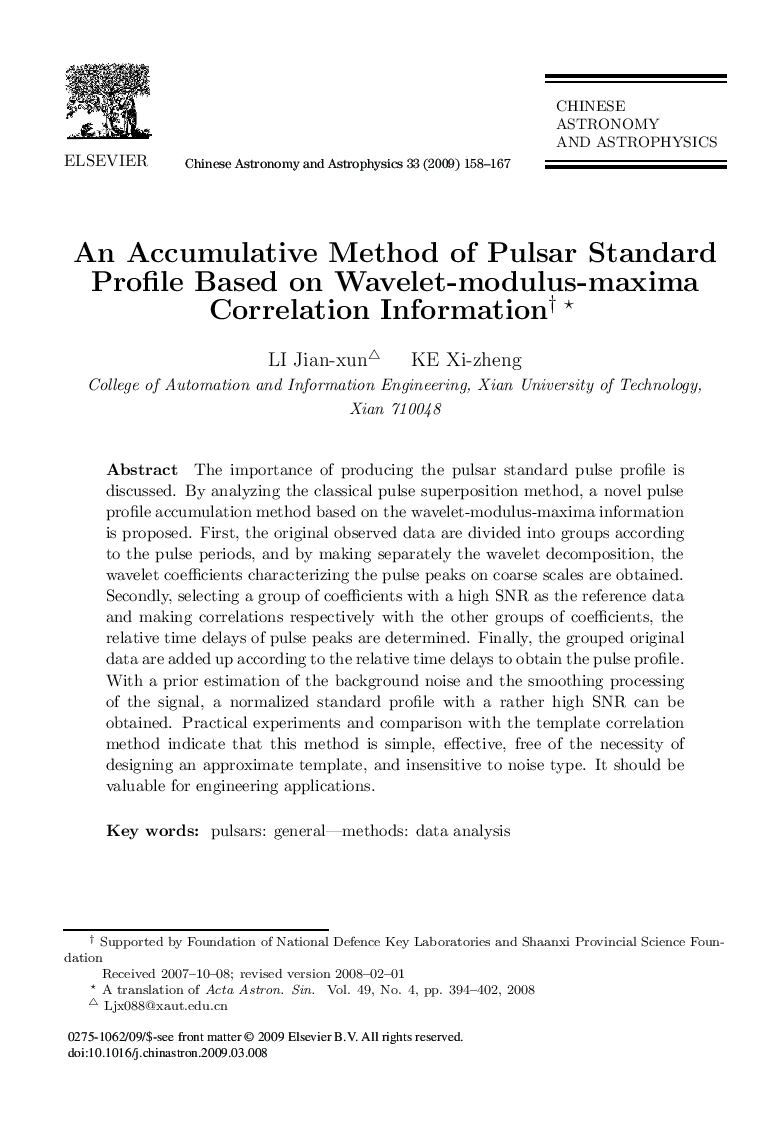| Article ID | Journal | Published Year | Pages | File Type |
|---|---|---|---|---|
| 1772044 | Chinese Astronomy and Astrophysics | 2009 | 10 Pages |
The importance of producing the pulsar standard pulse profile is discussed. By analyzing the classical pulse superposition method, a novel pulse profile accumulation method based on the wavelet-modulus-maxima information is proposed. First, the original observed data are divided into groups according to the pulse periods, and by making separately the wavelet decomposition, the wavelet coefficients characterizing the pulse peaks on coarse scales are obtained. Secondly, selecting a group of coefficients with a high SNR as the reference data and making correlations respectively with the other groups of coefficients, the relative time delays of pulse peaks are determined. Finally, the grouped original data are added up according to the relative time delays to obtain the pulse profile. With a prior estimation of the background noise and the smoothing processing of the signal, a normalized standard profile with a rather high SNR can be obtained. Practical experiments and comparison with the template correlation method indicate that this method is simple, effective, free of the necessity of designing an approximate template, and insensitive to noise type. It should be valuable for engineering applications.
